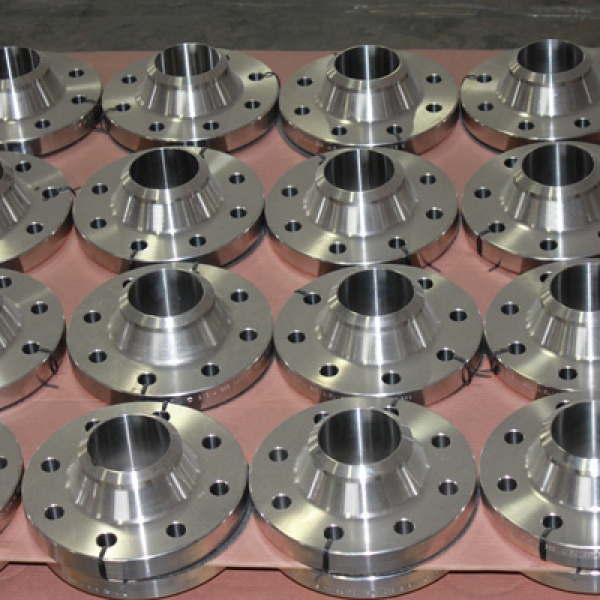Description
Blind Flange
A blind flange is a round plate which has all of the relevant blowholes except center hole, and because of this feature the blind flange is usually used to close off the ends of a piping systems and pressure vessel openings. It also permits easy access to the interior of a line or vessel once it has been sealed and must be reopened.
Without the blind flange it would be difficult to perform maintenance or repairs on a pipeline. The flow would need to be shut off at the nearest valve, which could be miles away from the repair area. Valves are also very expensive and are prone to sticking. The blind flange is a much more cost efficient way of sealing a pipe.
Blind Flanges are commonly used in petrochemical, pipe engineering, public services and water treatment etc.
Lap Joint Flange
A lap joint flange is very similar to a slip-on flange, with the main difference being that it has a curved radius at the bore and face to house a lap joint stub-end. Lap joint flanges and stub-end assemblies are typically used in situations where requires frequent dismantling for examination.
Slip-On Flange
Slip on pipe flanges are typically provided with a raised or flat face. When a raised face is necessary for slip on pipe flanges, the standard height is 1/16 inch for slip on pipe flanges fewer than 400#. For slip on pipe flanges of 400# and up, the standard slip on pipe flange raised face height is 1/4 inch.
The slip-on flange is positioned so the inserted end of the pipe or fitting is set short of the flange face by the thickness of the pipe wall plus 1/8 of an inch, which thus allows for a fillet weld inside the SO flange equal without doing any damage to the flange face. The back or outside of the slip-on flange or SO flange is also welded with a fillet weld.
Socket Weld Flange
The socket weld flange is generally applied on pipes with smaller sizes but high pressure. These pipe flanges are attached by inserting the pipe into the socket end and applying fillet weld around the top. This allows for a smooth bore and better flow of the fluid or gas inside of the pipe. Slip on Pipe flanges with a hub has published specifications that range from 1/2 inch to 24 inch.
Socket Weld pipe flanges are typically provided with a raised face, flat face, or RTJ facing. When a raised face is necessary for socket weld pipe flanges, the standard height is 1/16 inch for socket weld pipe flanges less than 400#. For socket weld pipe flanges of 400# and up, the standard socket weld pipe flange raised face height is 1/4 inch.
Threaded Flange
Threaded Flanges are similar to slip-on flanges in outline, but the bore is threaded, thus enabling assembly without welding. This obviously limits its application to relatively low pressure piping systems. Threaded Flanges may be welded around the joint after assembly, but this is not considered a satisfactory method of increasing the flanges' pressure applications. Threaded flange use in low press condition usually.
Weld Neck Flange
A weld neck flange consists of a circular fitting with a protruding rim around the circumference which is generally machined from a Forging, these flanges are typically butt welded to a pipe. The rim has a series of drilled holes that permit the flange to be affixed to another flange with bolts. Such flanges are suitable for use in hostile environments that have extremes of temperature, pressure or other sources of stress.
Weld neck pipe flanges are typically provided with a raised face, flat face, or RTJ facing. When a raised face is necessary for weld neck pipe flanges, the standard height is 1/16 inch for weld neck pipe flanges fewer than 400#. For weld neck pipe flanges of 400# and up, the standard weld neck pipe flange raised face height is 1/4 inch.
Plate Flange
The plate flange has a circular disk that is welded onto the end of a pipe and allows it to be bolted to another pipe. Typically used in fuel and water pipelines, the two flange plates will be bolted together with a gasket in between them. The flange plate will have bolt holes all around the perimeter and will be used to create junctions, tees and joints.
When building a pipeline, the lengths of the pipes used are not always known. By manufacturing the pipe separate from the flange plate, the welders can cut the pipe to length and weld a flange plate in place to join the pipes at any needed length. The plates can also be welded to the pipe on a slight bias, allowing two pipes to be joined that may not be precisely lined up.
